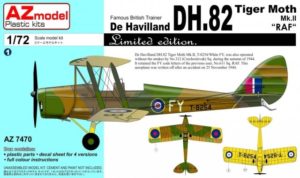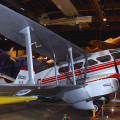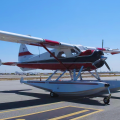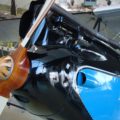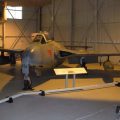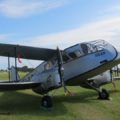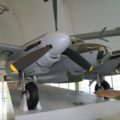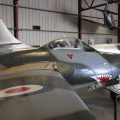Tá de Havilland DH.82 Tygří můra je dvouplošník z 30. let 20. let 20.0. let 20. 20.020 navržený Geoffreym de Havillandem a byl provozován Royal Air Force (RAF) a dalšími jako primární trenér. Tiger Moth zůstal ve službě u RAF, dokud ho v roce 1952 nenahradil de Havilland Chipmunk, když mnoho přebytečných letadel vstoupilo do civilního provozu. Mnoho dalších národů používalo Tiger Moth ve vojenských i civilních aplikacích a v mnoha zemích se stále široce používá jako rekreační letadlo. Stále se příležitostně používá jako primární výcvikové letadlo, zejména pro ty piloty, kteří chtějí získat zkušenosti před přechodem na jiná letadla na zadních kolečkách. Mnoho z nich je nyní zaměstnáno různými společnostmi, které nabízejí zkušenosti se zkušební výukou. Klub de Havilland Moth založený v roce 1975 je nyní sdružením vlastníků, které nabízí vzájemný klub a technickou podporu.
Zdroj: de Havilland DH.82 Tiger Můra na Wiki
...
Více:
The de Havilland DH.82 Tiger Moth is a biplane trainer aircraft that was widely used by the Royal Air Force and other air forces in the British Commonwealth during the 1930s and 1940s. It was designed by Geoffrey de Havilland and built by the de Havilland Aircraft Company. The Tiger Moth has a distinctive appearance with its fabric-covered wooden airframe, open cockpit, fixed landing gear and inverted Gipsy Major engine. It is capable of aerobatics and can be fitted with floats or skis for operation on water or snow. The Tiger Moth was originally developed from the earlier de Havilland DH.60 Moth, which was a successful light aircraft in the 1920s.
The DH.82 was designed to meet the specifications of the Air Ministry for a new primary trainer for the RAF. It first flew in 1931 and entered service in 1932. More than 7,000 Tiger Moths were produced in Britain, Canada, Australia, New Zealand and other countries. The Tiger Moth was used for basic flight training, navigation, instrument flying, wireless operation, gunnery and night flying. It also served as a liaison and observation aircraft during the Second World War. Many famous pilots learned to fly on the Tiger Moth, including Douglas Bader, Amy Johnson and Charles Lindbergh. The Tiger Moth remained in service with the RAF until 1952, when it was replaced by the de Havilland Chipmunk. Some Tiger Moths continued to fly as civilian aircraft until the 1970s. Today, many Tiger Moths are preserved and flown by enthusiasts around the world.

